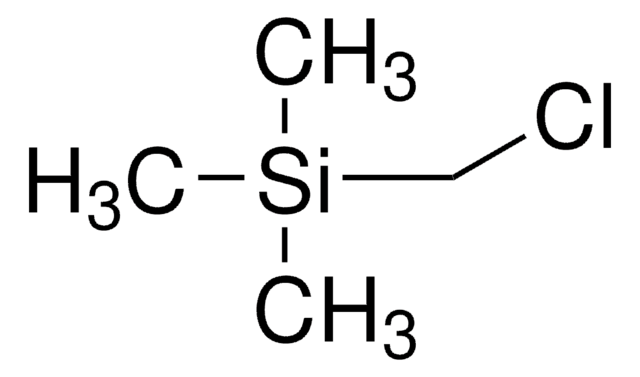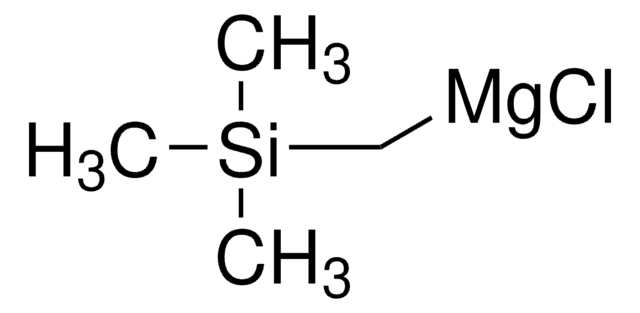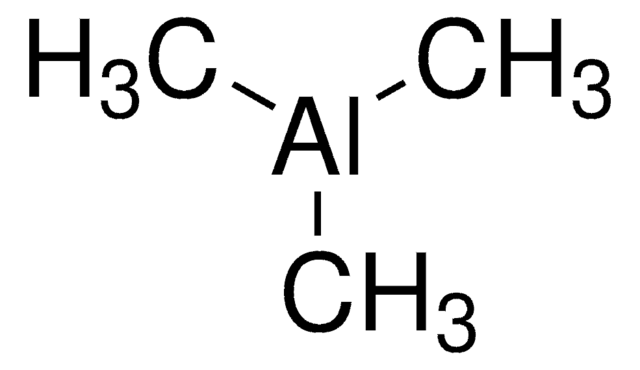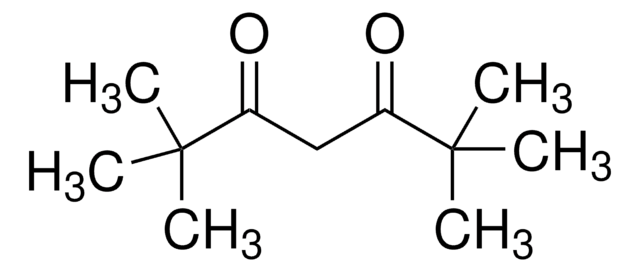227749
Bis(acetylacetonato)dioxomolybdenum(VI)
Sinonimo/i:
MoO2(acac)2, Molybdenum diacetylacetonate dioxide, Molybdenum dioxide bis(acetylacetonate), Molybdenum dioxydiacetylacetonate, Molybdenyl acetylacetonate
About This Item
Prodotti consigliati
Stato
powder
Livello qualitativo
Impiego in reazioni chimiche
core: molybdenum
reagent type: catalyst
Punto di fusione
184 °C (dec.) (lit.)
Temperatura di conservazione
2-8°C
Stringa SMILE
CC(=O)\C=C(\C)O[Mo](=O)(=O)O\C(C)=C/C(C)=O
InChI
1S/2C5H8O2.Mo.2O/c2*1-4(6)3-5(2)7;;;/h2*3,6H,1-2H3;;;/q;;+2;;/p-2/b2*4-3-;;;
SKMUJBBRXZPAJY-VGKOASNMSA-L
Descrizione generale
Applicazioni
- As a starting material to synthesize dioxomolybdenum(VI) Schiff base complexes, applicable as catalysts in the oxidation of alcohols using H2O2.
- To prepare graphene oxide supported heterogeneous molybdenum catalysts for epoxidation of olefins.
- As a catalyst in the etherification and thio-etherification reactions of thiols and alcohols.
Avvertenze
Warning
Indicazioni di pericolo
Classi di pericolo
Acute Tox. 4 Dermal - Acute Tox. 4 Inhalation - Acute Tox. 4 Oral - Carc. 2 - Eye Irrit. 2 - Skin Irrit. 2 - STOT SE 3
Organi bersaglio
Respiratory system
Codice della classe di stoccaggio
11 - Combustible Solids
Classe di pericolosità dell'acqua (WGK)
WGK 3
Punto d’infiammabilità (°F)
Not applicable
Punto d’infiammabilità (°C)
Not applicable
Dispositivi di protezione individuale
dust mask type N95 (US), Eyeshields, Gloves
Scegli una delle versioni più recenti:
Possiedi già questo prodotto?
I documenti relativi ai prodotti acquistati recentemente sono disponibili nell’Archivio dei documenti.
Il team dei nostri ricercatori vanta grande esperienza in tutte le aree della ricerca quali Life Science, scienza dei materiali, sintesi chimica, cromatografia, discipline analitiche, ecc..
Contatta l'Assistenza Tecnica.










